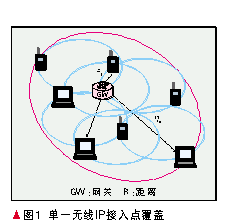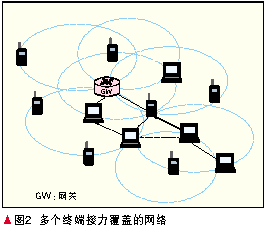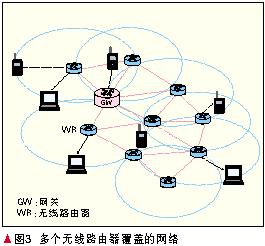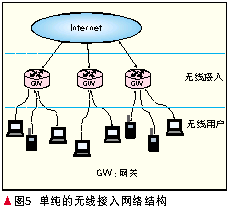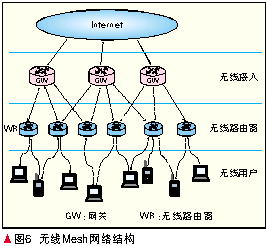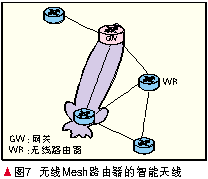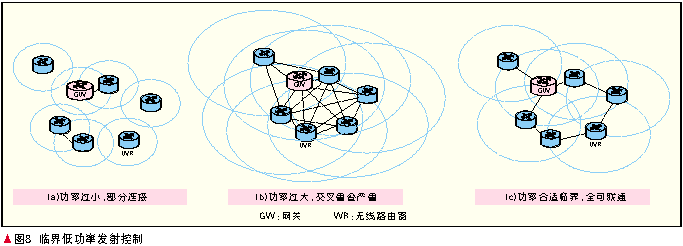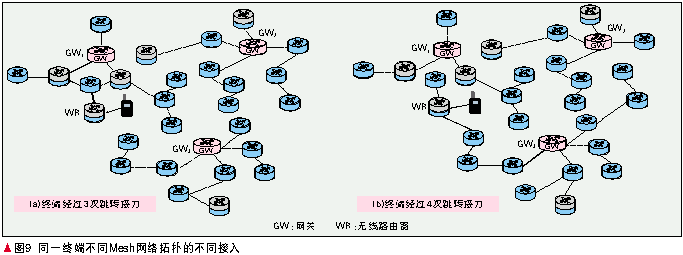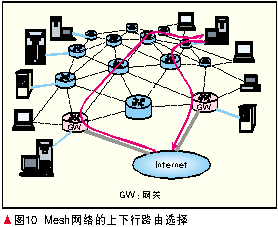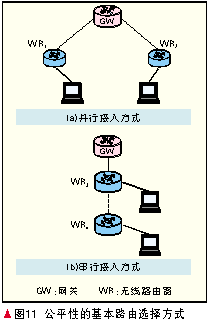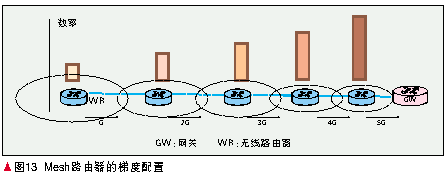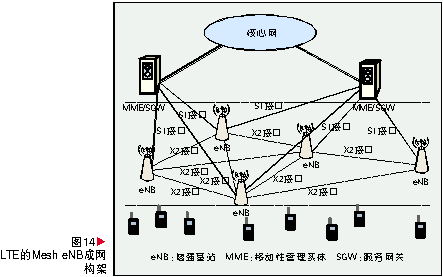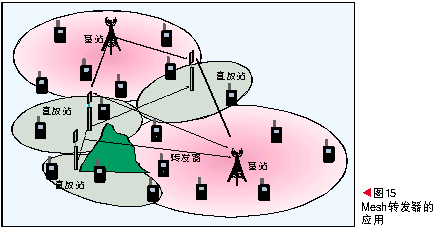Wireless Mesh Technology and Network Abstract: Wireless Mesh Network (WMN) is a new type of network technology that has been highly valued and rapidly developed in recent years and supports broadband high-speed multimedia business services. The article discusses the wireless mesh network technology and application, and summarizes the development of wireless mesh network, basic technology, typical applications and current development. With the development of wireless distribution technology and wireless distribution network in the future, wireless Mesh technology and network will become the basic network technology and network structure of wireless mobile communication, penetrate into various wireless networks and play a greater role. Keywords: wireless mesh network; Mesh router; wireless broadband access, future wireless communication Abstract: TheWirelessMeshNetwork (WMN) has been acTIvely researched and developed as a new network technology to support broadband and high speed mulTImedia services. In this paper, WMN technologies and applicaTIons are studied and analyzed deeply, including WMN evoluTIon, key techniques, typical systems and recent development. With the development of distributed wireless technology and distributed wireless networks in the future, the WMN technology and networks will become the basic networking technology and network structure of wireless communications, and will be involved in all wireless networks. Keywords: wirelessMeshnetwork; Mesh router; wireless broadband access; future wireless communications Fund Project: Project supported by the National Natural Science Foundation of China (60572066) Wireless mesh network (WMN) technology is a new type of wireless mobile communication technology based on IP access, suitable for regional environment coverage and broadband high-speed wireless access. The wireless Mesh network is based on the mutual cooperation and coordination of many wireless access points distributed in a mesh. It has the advantages of broadband high speed and high spectrum efficiency. It has outstanding characteristics such as dynamic self-organization, self-configuration, and self-maintenance. Therefore, the wireless Mesh technology The research and development and practical application of the Internet have become one of the hot topics of current wireless mobile communications. Especially in the future long-term evolution (LTE) of mobile communication systems, wireless Mesh technology and networks have become the focus of attention [1-6]. 1 Origin of wireless Mesh network The emergence and development of wireless Mesh networks are directly related to the rise and application of the Internet and wireless local area networks in the western developed countries, especially the United States, in the 1980s. The application of personal computers and the emergence of the Internet have made people's information exchange and information applications extremely convenient and easy, greatly changed people's social activities and living conditions, and promoted the rapid development and progress of society. However, the existing urban construction layout and buildings cannot be arbitrarily changed and rebuilt for the needs of the Internet. The construction layout cannot be changed, and the city buildings cannot be destroyed, which makes the coverage and application of the Internet extremely difficult. Therefore, wireless communication and wireless coverage have excellent application prospects. As an access method for Internet-oriented user terminals, wireless coverage is very effective and convenient. It has been valued by all parties and has been researched and applied one after another. For example, IEEE 802 series of standards and products are typical representatives of wireless mesh. However, the limited Internet access points and network connection locations of various cities and regions have brought difficulties in achieving full-area coverage through wireless. Figure 1 is a wireless IP access point (wireless gateway) for a given area of ​​wireless coverage. In the specific environment of cities and high-rise blocks, it is impossible to make large-scale construction and changes to buildings and blocks. A large area may have only one wireless gateway (WGW) connected to the Internet. Obviously, to achieve a single coverage, in the wireless mobile frequency band, the transmission signal power of the WGW and the corresponding user terminal will be very large, which is often not allowed or impossible. In addition, for IP data transmission, high data rate, good communication quality, and low error rate are required, and sufficient received signal power is also required. The large coverage area of ​​WGW requires high signal transmission power. For example, in Fig. 1, the distance from terminal 1 to WGW is R1, and the power of the stable received transmission signal is P1; the distance from terminal 4 to WGW is R4, and the power of the stable received transmission signal is P4. If R4 is 4 times R1, the radio signal propagation fading factor a = 4 (generally 3 to 5), that is, R4 = 4R1, then: P4 = 4aP1 = 256P1 Obviously, in order to cover the edge, the signal power should be increased by more than 250 times, which is impossible for ordinary personal terminals. In addition, if the bandwidth of the wireless mobile frequency band used by WGW is B, for a single coverage, each user terminal needs to transmit data b, then the maximum number of multi-users supported by the entire area at the same time is: M = B / b Obviously, the single coverage here does not multiplex a given frequency band, the number of supported terminals is small, and the multi-user capability is not high. The large power requirement of the transmitted signal and the low number of users supported are important shortcomings in the coverage of a single wireless IP access point as shown in Figure 1. To solve this problem, two effective solutions were proposed in the 1980s. A solution is shown in Figure 2. In order to keep the small signal transmission power P1 as shown in Figure 1 can be applied to all terminals, and allow user terminals at the edge or far end of the coverage to access the WGW, the neighboring terminals with routing functions are used as relay Jump, access to WGW, to achieve Internet access under tiny power. The integration of this solution to form a small power area coverage constitutes an Ad Hoc network. This kind of network can realize the access of small signal power, and the maximum number of users will not increase at the same time, but relay relay communication between user terminals requires additional overhead. This relies heavily on terminals with routing capabilities, and routing and network topology cannot be fixed and fluctuate greatly when the terminal moves. However, the Ad Hoc network does not need to add another wireless router to achieve micro cell coverage, and access to the Internet through the relay relay of the terminal is very convenient, practical and effective for building a wireless sensor network where the terminal is not mobile and the location is relatively random. Another solution is shown in Figure 3. The relevant area supported by one WGW is divided into different micro areas, which can overlap each other, and each micro cell sets up a wireless router (WR) to form a network coverage of many wireless routers. Each user terminal accesses the corresponding WR nearby, and the WR is directly connected to the GW, or connected to the GW through the relay relay of the neighboring WR, so as to realize the Internet access of the entire area. If each WGW is such an area coverage that introduces a large number of WRs, the integration of multiple GW coverage areas constitutes a new type of wireless network: a wireless Mesh network, as shown in Figure 4. In Figure 4, many WRs cooperate and collaborate with each other in a mesh distribution, wirelessly covering the entire city or any area to realize wireless mobile communication. The basic cell of a wireless Mesh network is a network cell covered by multiple wireless routers (also called Mesh routers) under a GW as shown in FIG. 3, and the maximum transmit signal power of its Mesh router and user terminal can be only P1 , And the maximum number of simultaneous multi-users supported by the wireless mobile band in the area is: M mesh = NB / b N is the number of Mesh routers in the area. In theory, the larger N is, the more users can be accepted at the same time. Therefore, the wireless Mesh network can not only solve the problems of fewer wireless IP access points and inconvenient access to the Internet, but also complete the work under the power of small signal and realize the Internet application of a large number of user terminals. Although the location and number of WGWs used for Internet access are affected by the urban environment and existing building patterns, they are only wired to the Internet at certain fixed locations. However, many Mesh routers that use wireless access from user terminals to achieve a new network layout can be flexibly set according to the location environment, propagation characteristics, and end user distribution. WR can be more or less, can be thin and dense. Generally, wireless communication is also used between WR and GW, but it is only to use a wireless frequency band different from the end user to achieve wireless communication between fixed points. Therefore, the network structure and networking method of the wireless Mesh network are flexible in structure, easy to install, and have outstanding characteristics such as dynamic self-organization, self-configuration, and self-maintenance. 2 Basic Technology of Wireless Mesh As can be seen from Figure 3, the wireless Mesh network adds a wireless router on the basis of the usual WGW (implementing wireless Internet access) and wireless user terminals. The original basic wireless access network structure shown in Figure 5 Evolved into the wireless Mesh network structure shown in Figure 6. The wireless mesh network adds a wireless router layer. Each router is connected by wireless, and the router and the wireless IP access point (WGW) are connected by wireless, and can be cross-linked to form a dense network. The basic technology and processing methods unique to the wireless Mesh network are derived from them, and they are directly related to the newly added wireless router layer different from the conventional pure wireless access network. 2.1 Wireless transmission technology of wireless Mesh router In the research of wireless Mesh network technology, the wireless transmission technology of Mesh router (such as WR) is often called the physical layer technology of wireless Mesh network. The transmission here mainly refers to the wireless transmission between the WR and the user terminal, the wireless transmission between the WR, and the wireless transmission between the WR and WGW. The wireless transmission between the WR and the user terminal is based on the wireless technology and standardization requirements supported by the user terminal, and realizes functions similar to a base station or a wireless access point, and can support various wireless air interface access requirements. The wireless Mesh network structure supports different standardized access systems and has different wireless transmission technologies. The wireless transmission between WR and user terminals can be adapted. The wireless transmission between WR and the wireless transmission between WR and WGW need to be defined and confirmed. In principle, what kind of transmission technology is not directly related to the technical standards and system methods supported by the user terminal, and the existing advanced technology and method can be used as much as possible. Since WR is equivalent to a base station, it is fixed in position and supports multi-user integrated high-speed data. It is densely covered and should avoid interference with each other as much as possible. There are multiple routing options. Therefore, smart directional antenna technology, efficient controllable modulation and coding technology, and low critical transmit power control technology are the most important physical layer transmission technologies. Smart directional antenna technology is a specified direction beamforming technology with concentrated signal power, as shown in Figure 7. In the 3G system, especially in the TD-SCDMA system working on the same frequency, it is widely used. Smart antenna technology is a special multiple-input multiple-output (MIMO) technology that uses m antenna element combinations with phase control to form m low-power directional transmissions in different directions to maximize the power of the signal reaching the receiving point. The radiation to other neighboring WRs is minimal and the impact is minimal, enabling low-power applications with dense network coverage. When it is not easy to directly use smart antennas, MIMO technology should also be used to improve power efficiency and transmission efficiency. Efficient and controllable modulation and coding technology is a common requirement for future wireless communications. However, the wireless transmission between WR and between WR and WGW, due to the fixed position, fixed transmission path, and smooth channel fading, can use effective channel estimation and compensation technology to achieve much higher transmission modulation efficiency and coding efficiency than the mobile environment To complete high-speed communication. Orthogonal frequency division multiplexing (OFDM) technology, quadrature amplitude modulation (QAM) iterative technology, Turbo codec technology, etc., which can achieve high speed, controllable and manageable, and adaptive, are the preferred technologies. Low critical transmit power control technology is the key to improve signal power efficiency and is closely related to the network topology. The wireless Mesh network adopts the dense access method of wireless access, which can realize the application of low signal power. In order to minimize the interference to adjacent WRs, the power control with the minimum critical transmission power is very important. Fig. 8 is a schematic diagram of critical low power transmission control. Fig. 8a is too low transmission power and only partially connected; Fig. 8b is too high transmission power, and the WR coverages overlap and overlap too much with each other, and the mutual interference is serious; In a critical situation, there is not much overlap and overlap with each other. Each WR can be connected to the WGW via a single hop or multiple hops, which can be fully connected and is the best control. Of course, signal transmission power control not only considers the network topology, but also considers the requirements of data service load, transmission delay, and service quality to achieve the maximum network capacity with excellent comprehensive performance. 2.2 MAC technology of multi-channel access Multi-channel technology that provides media access control (MAC) access, like the usual wireless communication network, has frequency division multiple access (FDMA) technology, time division multiple access (TDMA) technology, code division multiple access (CDMA) technology and use The space division multiple access (SDMA) technology of directional antennas is often a part or all of the comprehensive application of these multiple access technologies in practice to form a multi-channel access technology that is independent of each other and does not interfere with each other. Because WR's fixed-point directional transmission can make full use of smart antenna technology to achieve space division multiple access, and achieve as many independent transmission channels as possible without interfering with each other. Compared to conventional wireless communication, this is another feature of wireless Mesh networks. With the support of multiple access technology, the MAC layer design of the wireless Mesh network is the same as the MAC design of the typical typical wireless network, and is related to the access point. Since the wireless Mesh network is not a single-hop but a multi-hop system, it needs to support a multi-hop MAC design. The first is the access option of the nearest Mesh router. The wireless Mesh network is a self-organizing network. The topology of network routing connections and user terminal access conditions varies with geographic location, communication environment, user movement, and WR layout. It changes. As shown in FIG. 9, FIG. 9 (a) is a Mesh topology structure. After three hops, the terminal accesses the Internet access point GW1 to complete the MAC process. Figure 9 (b) is the same Mesh router and WGW layout in the same area, but the mesh topology connection is different. The terminal is in the same position, choose the same Mesh router, after 4 jump relays, access to the Internet access point GW3, Complete the MAC process. However, if you choose a different Mesh router in the vicinity, you may be able to access GW1 after only 2 or 3 hops. Therefore, the access selection of the nearest Mesh router of the wireless Mesh network is dynamic and different from the usual design. Typically, there is a multi-channel MAC technology protocol (MMAC protocol) applied to IEEE 802.11, and considering the interaction between the MAC layer and the network layer, a multi-channel cooperative sublayer (MCCL) is introduced to increase network capabilities. 2.3 Routing technology to access WGW The routing technology and related protocols that the user terminal connects to the wireless IP access point through WR are the most important technologies of the multi-hop wireless Mesh network. Research and design of routing technologies and protocols for accessing the Internet. The basic considerations are: as few multi-hops as possible, as small a delay as possible, as large a data rate as possible, as low an error rate as possible, as large as possible routing stability. In this way, the design of the routing protocol for accessing WGW should pay special attention to the following points: First, the routing protocol in the wireless Mesh network cannot be selected based on only the "minimum hop count", but a variety of performance metrics must be considered comprehensively After the evaluation, the routing is selected; secondly, the routing protocol should provide network fault tolerance and robustness support, and can quickly select an alternative link to avoid service interruption when the wireless link fails; third, the routing protocol should be able to use traffic engineering technology, Load balance among multiple paths to maximize the use of system resources; fourth, the routing protocol requires that it can support both routers and user terminals. The wireless Mesh routing protocol can refer to the Ad Hoc network routing protocol. Currently, several typical routing protocols are: dynamic source routing protocol (DSR), destination sequence distance vector routing protocol (DSDV), temporary sequential routing algorithm (TORA) and Ad Hoc On-demand distance vector routing protocol (AODV), etc. DSR is the most common peer-to-peer topology-based reactive self-organizing routing protocol. It is characterized by an active caching strategy and extracting topology information from source routes. By comparison, route creation is achieved. Figure 10 shows a wireless Mesh network, which may have different routing options for uplink and downlink. Mesh routers in wireless Mesh networks are usually stationary. In principle, there are no power consumption restrictions, and there is no change in router position and routing topology caused by user movement. Therefore, the existing Ad Hoc routing protocol can be simplified and carried out. Cross-layer design to build a much simpler routing protocol. However, for mobile user terminals, a routing protocol that is completely similar to Ad Hoc needs to be adopted to seek the nearest access point and access route. Another problem with the routing protocol of the access network is how to select a route to achieve fair access, so that the opportunity, data rate, and communication quality of the user terminal to access the network are basically the same. Figure 11 shows the basic routing method to achieve fairness. When possible, when the basic capabilities of the respective Mesh routers are the same, try to choose the parallel access method as shown in Figure 11 (a). The user terminal supports connecting to the Internet at the maximum possible data rate, and the support enjoyed by each user is the same and fair. Using the serial access method of Fig. 11 (b), under the condition that Mesh routers have basically the same capability, the maximum rate cannot be achieved if it is fair. At this time, WR4 connects the user terminal to WGW at data rate S4 through WR3. If WR3 has user access, the rate that WR3 can support is S3-S4. If the maximum support capability of WR is S, the fair access that may be achieved is : S3 = S4 = S / 2, WR4 has not reached the maximum support capability, WR3 has reached the maximum support capability, but the users it directly contacts can only achieve partial access capability of WR3. Only when the WR3 access capability is significantly greater than the WR4 access capability, the serial access method is more effective for achieving access fairness. This access fairness consideration is also the access consideration to realize the maximum capacity of each Mesh router in the network, which can maximize the network capacity. 2.4 Wireless Mesh router configuration technology Network equipment usually refers to Internet access points and Mesh routers. In the case of a given coverage area, if the WGW placement position can be changed, the placement position is determined; in the case of a given WR layout density and number, the placement position determination is a basic research topic for building a wireless Mesh network. In most cases, the WGW position is determined, so the configuration of Mesh routers is mainly studied. Mesh router configuration, as described in the routing section above, has two methods of parallel configuration and serial configuration. To achieve maximum network capacity, it is necessary to rely on multi-hop links (routing) in a serial configuration. This kind of link uses time-sharing to improve efficiency, so it is necessary to study time-sharing strategies and processing methods to avoid collisions. As shown in Figure 12. With serial configuration, the maximum access capability of the Mesh router has different requirements at different locations. You can transfer Mesh routers with large tasks through different modulation methods and different micro cell size coverage. Use high-speed transmission technology to cover smaller areas and reduce User terminals directly access demand. The Mesh router at the end of the multi-hop can use lower data rate and larger area coverage to achieve the best network capacity due to less transfer work. As shown in Figure 13. 3 Typical applications and standards The wireless mesh network is developed for Internet wireless access and applications. Its typical applications are mainly manifested in specific areas of the city, complex blocks, inside and outside buildings, office areas, and homes. The wireless Mesh network covered by a specific area of ​​the city launched by the British Lam Tech company uses 90 Mb / s broadband Internet access and 4-directional directional antenna transmission and reception; Motorola's wireless Mesh network built in Orlando, the United States is suitable for mobile broadband access. Adapt to transmission, pre-priority MAC and routing protocols; BelAir Networks is built on the 802.11b wireless Mesh network by Lake Ontario, Canada. Each router has 3 RF and 8 directional antennas, which can dynamically control the power and data rate of the transmitted signal To achieve load-balanced inside and outside building coverage; Telabria ’s wireless Mesh network built in Kent, UK, uses dual-carrier compatibility with 802.11 to achieve indoor and outdoor coverage in homes or office locations. In addition, there are many companies that launch wireless Mesh networks to provide broadband data services in different environments, such as Aerial Broadband, Firetide, Intel, Microsoft, Nokia, Notel, SkyPilot, and Strix systems. Companies, etc. All products and applications launched by these companies are basically represented by 802.11, 802.15, and 802.16 standards, and there are corresponding standards recommendations based on wireless Mesh technology and networks. 802.11s was proposed in 2004 to expand the coverage of 802.11. Actively led by Intel and Cisco, it is compatible with the 802.11a / b / g wireless distribution system standard, which can realize multi-hop networks with automatic path construction and self-configuration topology. Support both broadcast and multicast services. 802.15.1 and 802.15.4 are the standards of Bluetooth and Zigbee, and there are related suggestions for building wireless Mesh networks. Among them, 802.15.1 tends to support wireless low-speed communication in personal peripheral areas, and supports narrow bandwidth multi-hop dispersion with simple hardware Network; 802.15.4 uses Mesh topology to support low-speed communication, which is more suitable for wireless sensor network applications. 802.15.5 is a Mesh network topology standard more suitable for wireless personal area network (WPAN), easy to construct the network, used to expand network coverage and reduce router redundancy without increasing transmission power and affecting reception sensitivity. Can effectively improve network capabilities. 802.16 is the technical standard of WiMAX. To expand special user links, it is recommended to use centralized scheduling and distributed scheduling. 802.20 and 802.22 are mobile broadband high-speed wireless access system standards covering large areas. They are used in some areas and indoor and outdoor dense application environments. They are technical standards that utilize wireless Mesh networks. 4 Technology development and new applications The wireless Mesh network, although it was a technology developed in the early days of Internet network applications, is currently mainly aimed at the IEEE802 series of wireless access and network applications, but its network structure and networking method are still in the future wireless mobile communications. Great research value and application prospects. 4.13 Mesh network architecture in LTE The 3GPP organization started to promote the standardization research and application of 3G WCDMA, and continuously improved and enhanced the third generation mobile communication system based on WCDMA / TD-SCDMA. After the existing 3G mobile communication system (UMTS) R99, 3GPP has successively launched standard versions of R5 for high-speed data packet access (HSDPA) and R6 for high-speed uplink packet access (HSUPA). Since the beginning of the 21st century, broadband wireless access technologies and standard proposals represented by the IEEE 802 series have received widespread attention, especially their higher data rates, support for mobility, and the formation of existing mobile communication systems. Competitive situation. Therefore, in order to combat this technological competition and market competition, 3GPP launched the 3G Long Term Evolution (LTE) project in 2004. The LTE system uses 20 MHz bandwidth, and the peak rate of the air interface is 100 Mb / s for downlink (spectrum efficiency 5 bps / Hz) and 50 Mb / s for uplink (spectrum efficiency 2.5 bps / Hz). The IP network is used as the bearer network. To achieve the purpose of simplifying the signaling process and shortening the delay, LTE abandons the base station system structure of UTRAN's RNC + NodeB, and is entirely composed of enhanced base stations (eNBs). The topology of the LTE system is shown in Figure 14. The bottom layer between base stations uses IP transmission and logically connects to each other through the X2 interface. It is a traditional Mesh network. Such a network structure design is mainly used to support the mobility of user terminals in the entire network and ensure seamless handover of users. Each base station is connected to a service gateway (SGW) through an S1 interface. The S1 interface also uses Mesh or part of the Mesh type of connection to realize that a base station can be connected to multiple SGWs to provide better support for the growing needs of operators and users. I hope to achieve even more in the next 10 years. Has maintained the advantages of UMTS system. 4.2 Mesh repeater in wireless mobile system Mobile communication often faces coverage holes between cell edges (weak signals cannot stabilize the receiving location) and access requirements in some remote areas. Repeaters are used as simple base station extensions to meet the required coverage requirements. Because the repeater is too simple, the signal quality is poor, the access capacity is low, the interference to the surrounding is large, and there is no upgrade adaptability. In recent years, replacing repeaters with Mesh repeaters that introduce Mesh technology is an effective means to achieve the above objectives, as shown in Figure 15. In the figure, the coverage provided by the base station is limited. There are weak signal areas between neighboring cells and after high obstacles. After introducing Mesh repeaters as relays, they can be well covered and can adapt to changes in mobile users. Scheduling the working state of Mesh repeaters, it can run or suspend work at maximum load according to needs, to achieve reasonable and effective network capabilities. In this way, after using Mesh repeaters, the network has the ability to expand and reorganize, and it can also be continuously upgraded to provide high-quality and high-speed broadband services to any user in the coverage area. 5 Conclusion The wireless Mesh network is a network developed to meet the needs of wireless access to the Internet. It has been developed and applied in the traditional wireless broadband access system. With the rapid development of wireless mobile communications and the widespread use of the Internet, wireless Mesh networks have become a network technology and network form, which has been further valued and developed, and will gradually become the basic network technology of wireless mobile access networks and penetrate into the future. In various wireless networks. The wireless Mesh network was developed along with the Ad Hoc network. At first, it was to solve the wireless access network problem, but due to the different technical methods adopted (Ad Hoc relies on mobile user terminals to support routing functions and relay access. Wireless Mesh Relying on the fixed setting of wireless routers to expand coverage access), its characteristic capabilities and applications are obviously different. Wireless Mesh network, suitable for personal terminal applications, many business types, good coverage requirements, and applications with public service characteristics. Ad Hoc networks are more suitable for special applications with complex environments and applications, strong arbitrariness, and large changes in access support, such as wireless sensor networks and military networks. 6 References [1] SICHITIUML. Wireless mesh networks challenges and opportunities [R]. Raleigh, NC, USA: NC State University, USA, 2006. [2] AKYILDIZIF, WANG Xudong, WANG Weilin. Wireless mesh networks: a survey [J]. Computer Networks, 2005, 47 (4): 445-487. [3] OYMANO, LANEMAN JN, SANDHU S. Multihop relaying for broadband wireless mesh networks: from theory to practice [J]. IEEE Communications Magazine, 2007, 45 (11): 116-122. [4] NGUYENUT, JIN X. Multicast routing in wireless mesh networks: Minimum cost trees or shortest path trees? [J]. IEEE Communications Magazine, 2007, 45 (11): 72-77. [5] SKALLIH, GHOSH S, DAS SK, atel. Channel assignment strategies for multiradio wireless Mesh networks: Issues and solutions [J]. IEEE Communications Magazine, 2007, 45 (11): 86-95. [6] WEIHY, HAAS Z J. Interference-aware IEEE 802.16 WiMAX mesh networks [C] // Proceedings of 61st Vehicular Technology Conference (VTC2005-Spring): Vol5 (3102-3106), May 29-Jun 1, 2005, Stockholm , Sweden. Zhu Jinkang, professor, doctoral tutor, director of personal communication and spread spectrum laboratory, Department of Electronic Engineering and Information Science, University of Science and Technology of China. He used to be a member of the communication subject expert group and the leader of the personal communication expert group supported by the National High-Tech Research and Development Program ("863" Program), deputy director of the Academic Committee of the University of Science and Technology of China, executive dean and academic committee of the School of Information Science and Technology director. In recent years, the research directions are wireless mobile communication methods and technologies, CDMA and spread spectrum communication, wireless mobile communication networks and communication signal processing.
Everyone want a budget laptop. There are different level according to application scenarios. 14 inch Budget Laptop For Students for your elementary project, 10.1 inch Low Budget Laptop for kids play or online learning, 15.6inch celeron j4125 Budget Laptop For Programmers, 14inch budget i5 laptop for your business projects, 15.6inch budget i7 laptop for university students, officers who love bigger screen and performance focused, etc. Of course, other type laptops also optional, like Yoga Laptop , 2 In 1 Laptop , android laptop, etc
As a professional manufacture of custom laptop, Android Tablet, Mini PC , All In One PC, we can provide unique and satisfy oem service. What you need to do is kindly share the exact parameters and special points care more, thus we can provide solutions accordingly.
When you have tender, you can contact us and send the parameters list require, then will provide the most matched one for you. More simple way is that you share your budget, design, delivery time , etc. Believe you can always get a right solution here.
Budget Laptop,20k Budget Laptop,Low Budget Laptop,Top 10 Budget Laptops,Budget Laptop For Programmers Henan Shuyi Electronics Co., Ltd. , https://www.shuyitablet.com